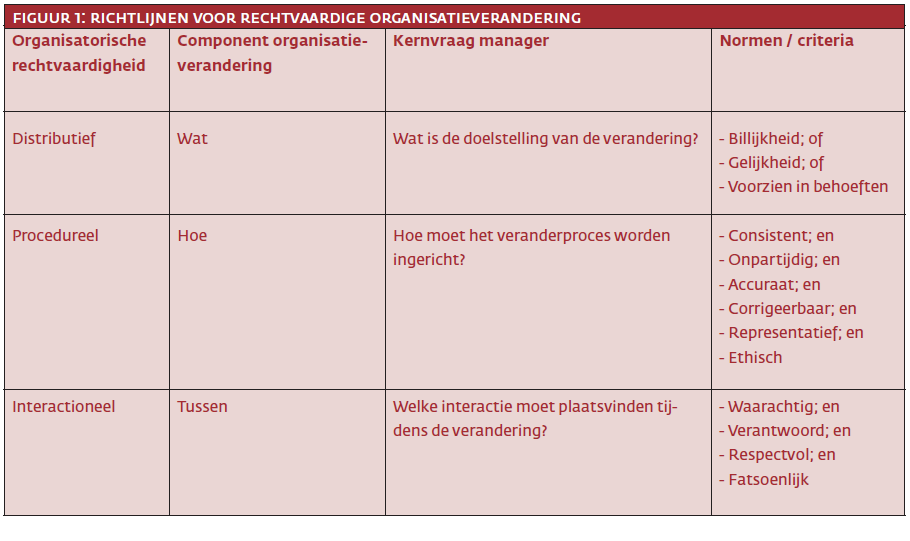Veranderen is voor veel mensen een ingewikkeld proces, zowel in de persoonlijke sfeer als in de context van de moderne organisatie. Organisatieverandering vraagt vaak om aanpassing van het gedrag van grote groepen medewerkers. De manager die verantwoordelijk is voor het realiseren van deze organisatieveranderingen, heeft dan ook een uitdagende baan, zeker in het huidig economisch klimaat waar veel organisatieveranderingen zich het beste laten typeren als ‘koude’ opgaven (Ten Have, 1999)15. Juist in situaties waar gevoelige verdelingsvraagstukken spelen (denk aan de verdeling van arbeidsplaatsen bij een reorganisatie) komt het ervaren onrecht aan de oppervlakte en kunnen de reacties van medewerkers heftig zijn.
In dit artikel wordt uiteengezet waarom het voor de manager met een veranderopgave cruciaal is om rekening te houden met de rechtvaardigheidsbelevingen van medewerkers, zowel ten aanzien van de uitkomst (distributieve rechtvaardigheid), het formele proces (procedurele rechtvaardigheid) als de wijze waarop de boodschap gebracht wordt (interactionele rechtvaardigheid).
Sterke behoefte aan rechtvaardigheid
Als andere mensen



Heeft gereageerd op:
Geweldig artikel. Een must read voor iedere manager, en niet alleen als er sprake is van verandering.